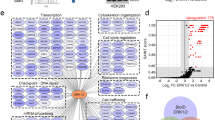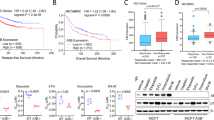Abstract
The incidence of malignant melanoma is growing rapidly worldwide and there is still no effective therapy for metastatic disease. Melanoma is the second most common cancer among young adults in the UK, where incidence rates have more than quadrupled since the 1970s. Increased expression of a number of DNA repair genes has been reported in melanoma and this likely contributes to its extreme resistance to conventional DNA-damaging chemotherapeutics. One such chemotherapeutic that is effective against a range of other cancers, but not melanoma, is cisplatin. The DNA repair proteins ERCC1 and XPF are needed to remove cisplatin-induced DNA damage and we have investigated the response of these proteins to cisplatin in melanoma. The expression of both genes is induced by cisplatin. Use of a MEK inhibitor showed that ERCC1, but not XPF induction was regulated by the mitogen-activated protein kinase (MAPK) pathway, with reduction in expression of DUSP6, the phosphatase that inactivates the extracellular signal-regulated kinase (ERK), being particularly important. DUSP6 overexpression prevented cisplatin induction of both ERCC1 and XPF, resulting in increased sensitivity to cisplatin. A novel ERCC1 mRNA was found that initiated upstream of the normal transcription initiation site, and was strongly regulated by both cisplatin and the MAPK pathway and its role in cisplatin resistance merits further study. The cisplatin induction of ERCC1 and XPF provides important insights into the resistance of melanoma to DNA-damaging chemotherapeutics, which is one of the major obstacles to melanoma treatment.
This is a preview of subscription content, access via your institution
Access options
Subscribe to this journal
Receive 50 print issues and online access
$259.00 per year
only $5.18 per issue
Buy this article
- Purchase on Springer Link
- Instant access to full article PDF
Prices may be subject to local taxes which are calculated during checkout








Similar content being viewed by others
References
Agar N, Young AR . (2005). Melanogenesis: a photoprotective response to DNA damage? Mutat Res 571: 121–132.
Andrieux LO, Fautrel A, Bessard A, Guillouzo A, Baffet G, Langouet S . (2007). GATA-1 is essential in EGF-mediated induction of nucleotide excision repair activity and ERCC1 expression through ERK2 in human hepatoma cells. Cancer Res 67: 2114–2123.
Bermudez O, Pages G, Gimond C . (2010). The dual-specificity MAP kinase phosphatases: critical roles in development and cancer. Am J Physiol Cell Physiol 299: C189–C202.
Bosl GJ, Motzer RJ . (1997). Testicular germ-cell cancer. N Engl J Med 337: 242–253.
Brown R, Clugston C, Burns P, Edlin A, Vasey P, Vojtesek B et al. (1993). Increased accumulation of p53 protein in cisplatin-resistant ovarian cell lines. Int J Cancer 55: 678–684.
Brozovic A, Osmak M . (2007). Activation of mitogen-activated protein kinases by cisplatin and their role in cisplatin-resistance. Cancer Lett 251: 1–16.
Cancer Research UK. Cancer Statistics, (2011). http://info.cancerresearchuk.org/cancerstats.
Chan DW, Liu VW, Tsao GS, Yao KM, Furukawa T, Chan KK et al. (2008). Loss of MKP3 mediated by oxidative stress enhances tumorigenicity and chemoresistance of ovarian cancer cells. Carcinogenesis 29: 1742–1750.
Chapman PBL, Einhorn H, Meyers ML, Saxman S, Destro AN, Panageas KS et al. (1999). Phase III multicenter randomized trial of the Dartmouth regimen versus dacarbazine in patients with metastatic melanoma. J Clin Oncol 17: 2745–2751.
Chapman PB, Hauschild A, Robert C, Haanen JB, Ascierto P, Larkin J et al. (2011). Improved survival with vemurafenib in melanoma with BRAF V600E mutation. N Engl J Med 364: 2507–2516.
Ciuffreda L, Del Bufalo D, Desideri M, Di Sanza C, Stoppacciaro A, Ricciardi MR et al. (2009). Growth-inhibitory and antiangiogenic activity of the MEK inhibitor PD0325901 in malignant melanoma with or without BRAF mutations. Neoplasia 11: 720–731.
Ekerot M, Stavridis MP, Delavaine L, Mitchell MP, Staples C, Owens DM et al. (2008). Negative-feedback regulation of FGF signalling by DUSP6/MKP-3 is driven by ERK1/2 and mediated by Ets factor binding to a conserved site within the DUSP6/MKP-3 gene promoter. Biochem J 412: 287–298.
Ferry KV, Hamilton TC, Johnson SW . (2000). Increased nucleotide excision repair in cisplatin-resistant ovarian cancer cells: role of ERCC1-XPF. Biochem Pharmacol 60: 1305–1313.
Furukawa T, Sunamura M, Motoi F, Matsuno S, Horii A . (2003). Potential tumor suppressive pathway involving DUSP6/MKP-3 in pancreatic cancer. Am J Pathol 162: 1807–1815.
Graham FL, van der Eb AJ . (1973). A new technique for the assay of infectivity of human adenovirus 5 DNA. Virology 52: 456–467.
Gozdz A, Vashishta A, Kalita K, Szatmari E, Zheng JJ, Tamiya S et al. (2008). Cisplatin-mediated activation of extracellular signal-regulated kinases 1/2 (ERK1/2) by inhibition of ERK1/2 phosphatases. J Neurochem 106: 2056–2067.
Hoshino R, Chatani Y, Yamori T, Tsuruo T, Oka H, Yoshida O et al. (1999). Constitutive activation of the 41-/43-kDa mitogen-activated protein kinase signaling pathway in human tumors. Oncogene 18: 813–822.
Jansen B, Schlagbauer-Wadl H, Eichler HG, Wolff K, van Elsas A, Schrier PI et al. (1997). Activated N-ras contributes to the chemoresistance of human melanoma in severe combined immunodeficiency (SCID) mice by blocking apoptosis. Cancer Res 57: 362–365.
Johannessen CM, Boehm JS, Kim SY, Thomas SR, Wardwell L, Johnson LA et al. (2010). COT drives resistance to RAF inhibition through MAP kinase pathway reactivation. Nature 468: 968–972.
Johnson GL, Vaillancourt RR . (1994). Sequential protein kinase reactions controlling cell growth and differentiation. Curr Opin Cell Biol 6: 230–238.
Kauffmann A, Rosselli F, Lazar V, Winnepenninckx V, Mansuet-Lupo A, Dessen P et al. (2008). High expression of DNA repair pathways is associated with metastasis in melanoma patients. Oncogene 27: 565–573.
Kirschner K, Melton DW . (2010). Multiple roles of the ERCC1-XPF endonuclease in DNA repair and resistance to anticancer drugs. Anticancer Res 30: 3223–3232.
Ko JC, Su YJ, Lin ST, Jhan JY, Ciou SC, Cheng CM et al. (2010). Suppression of ERCC1 and Rad51 expression through ERK1/2 inactivation is essential in emodin-mediated cytotoxicity in human non-small cell lung cancer cells. Biochem Pharmacol 79: 655–664.
Koberle B, Grimaldi KA, Sunters A, Hartley JA, Kelland LR, Masters JR . (1997). DNA repair capacity and cisplatin sensitivity of human testis tumour cells. Int J Cancer 70: 551–555.
Koberle B, Masters JR, Hartley JA, Wood RD . (1999). Defective repair of cisplatin-induced DNA damage caused by reduced XPA protein in testicular germ cell tumours. Curr Biol 23: 273–276.
Kondoh K, Nishida E . (2007). Regulation of MAP kinases by MAP kinase phosphatases. Biochim Biophys Acta 1773: 1227–1237.
Kuraoka I, Kobertz WR, Ariza RR, Biggerstaff M, Essigmann JM, Wood RD . (2000). Repair of interstrand DNA crosslink initiated by ERCC1-XPF repair/recombination nuclease. J Biol Chem 275: 26632–26636.
Lebwohl D, Canetta R . (1998). Clinical development of platinum complexes in cancer therapy: an historical perspective and an update. Eur J Cancer 34: 1522–1534.
Lee-Kwon W, Park D, Bernier M . (1998). Involvement of the Ras/extracellular signal-regulated kinase signalling pathway in the regulation of ERCC-1 mRNA levels by insulin. Biochem J 331: 591–597.
Livak KJ, Schmittgen TD . (2001). Analysis of relative gene expression data using real-time quantitative PCR and the 2(-Delta Delta C(T)) Method. Methods 25: 402–428.
Martin LP, Hamilton TC, Schilder RJ . (2008). Platinum resistance: the role of DNA repair pathways. Clin Cancer Res 14: 1291–1295.
Mirmohammadsadegh A, Mota R, Gustrau A, Hassan M, Nambiar S, Marini A et al. (2007). ERK1/2 is highly phosphorylated in melanoma metastases and protects melanoma cells from cisplatin-mediated apoptosis. J Invest Dermatol 127: 2207–2215.
Nazarian R, Shi H, Wang Q, Kong X, Koya RC, Lee H et al. (2010). Melanomas acquire resistance to B-RAF(V600E) inhibition by RTK or N-RAS upregulation. Nature 468: 973–937.
Oliveria SA, Saraiya M, Geller AC, Heneghan MK, Jorgensen C . (2006). Sun exposure and risk of melanoma. Arch Dis Child 91: 131–138.
Persons DL, Yazlovitskaya EM, Cui W, Pelling JC . (1999). Cisplatin-induced activation of mitogen-activated protein kinases in ovarian carcinoma cells: inhibition of extracellular signal-regulated kinase activity increases sensitivity to cisplatin. Clin Cancer Res 5: 1007–1014.
Petit C, Sancar A . (1999). Nucleotide excision repair: from E. coli to man. Biochimie 81: 15–25.
Rabik CA, Dolan ME . (2007). Molecular mechanisms of resistance and toxicity associated with platinating agents. Cancer Treat Rev 33: 9–23.
Rosell R, Taron M, Barnadas A, Scagliotti G, Sarries C, Roig B . (2003). Nucleotide excision repair pathways involved in cisplatin resistance in non-small-cell lung cancer. Cancer Control 10: 297–305.
Selfridge J, Song L, Brownstein DG, Melton DW . (2010). Mice with DNA repair gene Ercc1 deficiency in a neural crest lineage are a model for late-onset Hirschsprung disease. DNA Repair 9: 653–660.
Shahzad MM, Lopez-Berestein G, Sood AK . (2009). Novel strategies for reversing platinum resistance. Drug Resist Updat 12: 148–152.
Song L, Winter AG, Selfridge J, Melton DW . (2011). A novel transcript for DNA repair gene Ercc1 in mouse skin. Transgenic Res 20: 109–122.
Stecca C, Gerber GB . (1998). Adaptive response to DNA-damaging agents: a review of potential mechanisms. Biochem Pharmacol 55: 941–951.
Tsao H, Atkins MB, Sober AJ . (2004). Management of cutaneous melanoma. N Engl J Med 351: 998–1012.
van Duin M, Koken MH, van den Tol J, ten Dijke P, Odijk H . (1987). Genomic characterization of the human DNA excision repair gene ERCC-1. Nucleic Acids Res 15: 9195–9213.
Vichai V, Kirtikara K . (2006). Sulforhodamine B colorimetric assay for cytotoxicity screening. Nat Protoc 1: 1112–1116.
Wang X, Martindale JL, Holbrook NJ . (2000). Requirement for ERK activation in cisplatin-induced apoptosis. J Biol Chem 275: 39435–39443.
Wang X, Martindale JL, Liu Y, Holbrook NJ . (1998). The cellular response to oxidative stress: influences of mitogen-activated protein kinase signalling pathways on cell survival. Biochem J 333: 291–300.
Welsh C, Day R, McGurk C, Masters JR, Wood RD, Koberle B . (2004). Reduced levels of XPA, ERCC1 and XPF DNA repair proteins in testis tumor cell lines. Int J Cancer 110: 352–361.
Winter AG, Dorgan C, Melton DW . (2005). Expression of a splicing variant in the 5′-UTR of the human ERCC1 gene is not cancer related. Oncogene 24: 2110–2113.
Xia Z, Dickens M, Raingeaud J, Davis RJ, Greenberg ME . (1995). Opposing effects of ERK and JNK-p38 MAP kinases on apoptosis. Science 270: 1326–1331.
Yacoub A, McKinstry R, Hinman D, Chung T, Dent P, Hagan MP . (2003). Epidermal growth factor and ionizing radiation up-regulate the DNA repair genes XRCC1 and ERCC1 in DU145 and LNCaP prostate carcinoma through MAPK signaling. Radiat Res 159: 439–452.
Acknowledgements
The cisplatin colony-forming assay was carried out by Ann-Marie Ritchie. We are grateful to Professor Toru Furukawa (Tohoku University School of Medicine, Japan), who kindly provided the DUSP6 plasmid. WL was supported by a China Scholarship Council/University of Edinburgh Scholarship. This work was supported by the Charon Fund.
Author information
Authors and Affiliations
Corresponding author
Ethics declarations
Competing interests
The authors declare no conflict of interest.
Additional information
Supplementary Information accompanies the paper on the Oncogene website
Rights and permissions
About this article
Cite this article
Li, W., Melton, D. Cisplatin regulates the MAPK kinase pathway to induce increased expression of DNA repair gene ERCC1 and increase melanoma chemoresistance. Oncogene 31, 2412–2422 (2012). https://doi.org/10.1038/onc.2011.426
Received:
Revised:
Accepted:
Published:
Issue Date:
DOI: https://doi.org/10.1038/onc.2011.426
Keywords
This article is cited by
-
Down-regulation of GADD45A enhances chemosensitivity in melanoma
Scientific Reports (2018)
-
Melanoma cells replicate through chemotherapy by reducing levels of key homologous recombination protein RAD51 and increasing expression of translesion synthesis DNA polymerase ζ
BMC Cancer (2017)
-
A regulatory circuit composed of DNA methyltransferases and receptor tyrosine kinases controls lung cancer cell aggressiveness
Oncogene (2017)
-
Computed determination of the in vitro optimal chemocombinations of sphaeropsidin A with chemotherapeutic agents to combat melanomas
Cancer Chemotherapy and Pharmacology (2017)
-
Regulation of Multi-drug Resistance in hepatocellular carcinoma cells is TRPC6/Calcium Dependent
Scientific Reports (2016)



